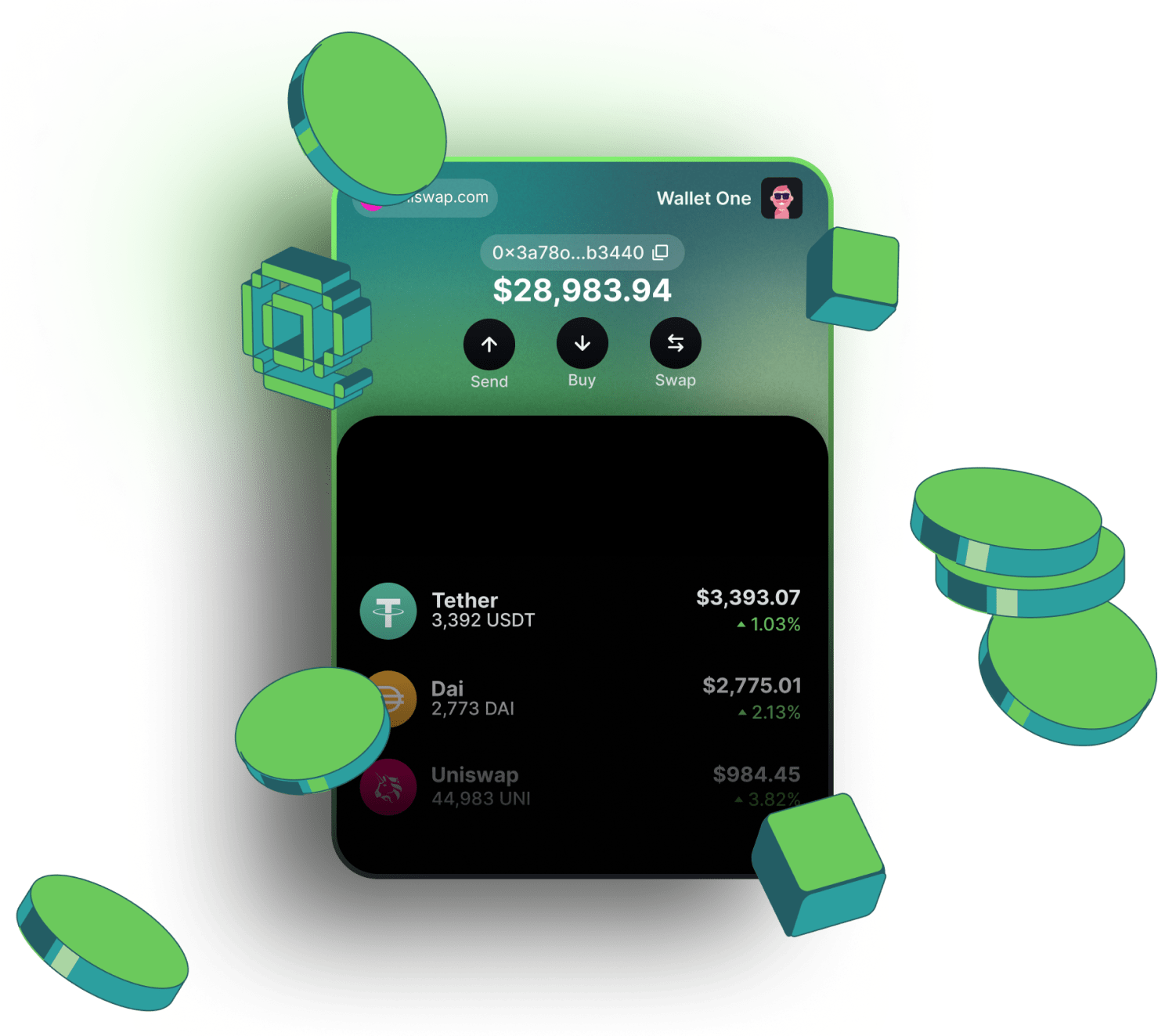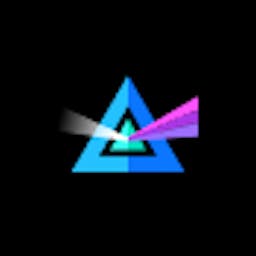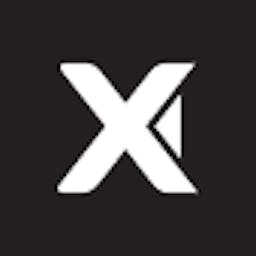Wigwam is the best  Flare blockchain crypto wallet
Flare blockchain crypto wallet

Why choose the Wigwam crypto app?
Work with Flare Testnets and Mainet
Buy Flare tokens, including native token, by using a credit card
Swap Flare-based tokens directly in the wallet
Possibility to connect the wallet to all Flare Blockchain dAps: DeFi, DAO, Gamings, etc
How to get a Flare address in Wigwam web wallet
Create a wallet in Wigwam
Choose a Flare network from the dropdown menu
Copy you Flare address
Flare Blockchain Review
Flare blockchain is a network designed to introduce Turing-complete smart contract features to cryptocurrencies like Ripple (XRP) and later Litecoin (LTC), among others. It makes secure and DeFi operations possible for currencies that previously couldn't directly use smart contracts, broadening their use cases.
Origin and Vision
In 2022, a team of six developers introduced the Flare blockchain to enable open, safe, and decentralized cross-compatibility between blockchains. It relied on two protocols: the Flare Time Series Oracle (FTSO) as a source of off-chain network data, and the State Connector for using external blockchain data (general info or asset-specific data) on the network. These protocols provided developers with cost-effective access to extensive data and data proofs from other chains such as Bitcoin and Ethereum and web2 Internet sources like social media sites and applications. It advanced the blockchain use cases in the NFTs, DeFi, music, gaming, and social networks.
Key Milestones
In 2021, the Flare network raised $11.3 million in investment funding led by Kenetic Capital. The funds were used to develop the Flare blockchain that officially launched the following year. It introduced monetization models, such as engagement in DeFi services, yield farming, and lending through protocols like FlareLoans and FlareFarm. Also, it enhanced cross-chain functionality, and new use cases in DeFi and NFTs through decentralized access to high-integrity data.
In January 2024, Google Cloud partnered with Flare Time Series Oracle (FTSO), becoming a validator and contributor to the network. Flare delegates new block proposals and validator roles to Google Cloud, supporting and securing the chain’s proof-of-stake consensus mechanism. With Google Cloud as an infrastructure provider, developers on Flare gain enhanced capabilities to build creative dApps.
What Consensus Algorithm Does Flare Blockchain Use?
Flare uses the Turing-complete Federated Byzantine Agreement (FBA) mechanism and Snowman++ consensus protocol from Avalanche to ensure scalability, fast, and low-cost transactions on the network. In this setup, validators keep individual ledger copies and continuously communicate with other nodes for consistency as new data is added. These nodes respond to State Connector queries, continuously supply data to the FTSO system, and secure the network through proof-of-stake consensus.
The Flare Blockchain currently has 100 organizations as validators for the FTSO. Infrastructure providers become nodes on Flare by associating with an FTSO Data Provider, self-bonding a minimum of 1 million FLR on the chain, and staking at least 50,000 FLR tokens. A single FTSO data provider can connect with up to 4 validators, and the performance of the data provider influences validation rewards.
How Flare Technically Solved Problems with Scalability, Decentralization, and Speed?
The Flare blockchain effectively addressed scalability, speed, and decentralization challenges using the Federated Byzantine Agreement (FBA) mechanism and Avalanche consensus protocol. It scales the network through validators that produce blocks and confirm transactions. These nodes use the Avalanche consensus protocol with a key modification to the FBA consensus topology to ensure efficient transaction processing with low costs.
For decentralization, Flare enables community participation in governance, allowing votes on proposed policy changes and future network upgrades.
DeFi ecosystem on Flare
The Flare DeFi ecosystem provides users with decentralized applications (dApps) like Pangolin and FlareLoans amongst others. Pangolin, driven by the community, offers low transaction fees and fast settlement, while FlareLoans is a platform that provides loans using FLR tokens as collateral, charging an annual interest rate.
Flare NFTs marketplaces
The Flare NFT ecosystem provides various platforms such as Sparkles and FlareOcean NFT among user-friendly options, for creating, buying, and selling digital artworks. Sparkles is a new community engineered open marketplace for artists to trade various art collections, while users can buy and sell over 1,000 premium digital artworks on FlareOcean NFT.
Tokenomics of the FLR token and gas usage on Flare
The FLR token has various use cases within the Flare ecosystem, including:
- Transaction Fees: FLR holders use the coin as the transaction fee to initiate and execute smart contracts within the Flare ecosystem.
- Governance: FLR token holders can actively participate in the network security and governance by contributing to decision-making processes and voting on proposals.
- Borrowing and Lending - Holders of FLR tokens can access DeFi services and apps within the network by using the FLR token through yield farming or as collateral. It enables users to participate in lending through protocols like FlareFarm and FlareLoans.
- Staking: FLR token holders can stake their tokens on Flare to secure the network and participate in validation processes for rewards. Each validator has a staking cap on rewards, limited to 5% of the network's total staked funds.
Conclusion
Flare is the first Turing-complete FBA network globally, offering increased scalability and low transaction costs. It’s an interoperable, EVM-compatible blockchain enabling users to create smart contracts and decentralized applications (dApps) easily.
FAQ
Users pay gas fees on this blockchain using the FLR token.
Effortlessly monitor Flare wallet activities via blockchain explorers and user-friendly options include FlareScan and Flare Blockchain Explorer. FlareScan provides information on FLR price, market cap, latest blocks, and transactions.
Flare Blockchain Explorer provides information about average block time, wallet addresses, and total transactions and blocks.
The best crypto wallets for the Flare blockchain includes the following:
- Wigwam Web3 Browser
- Atomic Wallet
- Bifrost Wallet
- MetaMask Wallet.
To begin, go to the official MetaMask website at https://metamask.io/download/ and download the application. Install it, set up your wallet, and navigate to the settings page. Open the dropdown menu, choose "Add Network," and enter the following details:
Network Name - Flare
New RPC URL - https://flare-api.flare.network/ext/bc/C/rpc
Chain ID - 14
Currency Symbol - FLR
Block Explorer URL - https://flare-explorer.flare.network
Save the settings, and you're now linked to the Flare network, all set to explore activities on your MetaMask wallet.
Notable initiatives on the Flare blockchain encompass DeFi and NFTs. Pangolin and Enosys DEX are well-known DeFi projects, while recognized NFT platforms include Sparkles and FlareOcean NFT.





